Market Insights: FP Journe Over the Last Decade
Over the last decade, the luxury watch market has experienced several converging trends. Global economic growth in emerging markets, the proliferation of digital media, and an increasing interest in ‘investable’ luxury items have combined to spur demand. Collectors are not only looking for these watches as instruments of timekeeping but also as works of art and tangible assets that hold, or even appreciate in value. In this context, scarcity, heritage, and innovation have become critical drivers of desirability.
Traditionally, brands such as Patek Philippe and Rolex dominated the conversation. However, a shift has been underway. Independent watchmakers, often characterized by small production numbers and groundbreaking designs, have begun to command a higher share of both media attention and collector interest. Social media platforms, online forums, and specialized watch blogs have all played a significant role in democratizing information, thereby allowing previously under‑the‑radar brands to reach a global audience.
Last updated 12 June 2025
The Rise of Independent Watchmakers
Independent brands are celebrated for their artisanal approach, technical innovation, and the ability to produce watches that are as much ‘sculptures’ as they are timepieces. FP Journe, along with peers like Philippe Dufour, Grönefeld, and Romain Gauthier, has carved out a unique niche in this space. These brands typically manufacture fewer than a thousand pieces per year, creating a sense of exclusivity that naturally drives secondary market premiums.
In a market characterized by limited production and the scarcity principle, the controlled output becomes a strategic asset. For example, whereas major brands may produce tens of thousands of watches annually, FP Journe’s production numbers are often estimated to be around 900 to 1,000 pieces per year, which makes its models exceedingly rare. This scarcity, combined with a loyal collector base and an ever-growing number of new entrants to the market, has led to sustained price appreciation. Indeed, some FP Journe models now command secondary market prices that are several times their retail values, as has been noted in auction results and market analyses. 1
Auction Records and Secondary Market Performance
One of the most striking indicators of the brand’s impact is the record-breaking performance at auctions. Over the past few years, FP Journe’s works have consistently achieved prices that far exceed estimates. Auction houses like Phillips have reported explosive growth, with some models, especially limited editions and early ‘brass period’ pieces, trading for five to seven times retail price. In one high-profile case, a piece-unique model sold for over CHF 4.5 million at Only Watch, and more recently, even earlier models have shattered records, making FP Journe not only a desirable collector’s item but also a robust asset class for investors. 2
We asked EveryWatch co-founder, Giovanni Prigigallo, if other independent brands are seeing similar increases in value and demand for their watches, he responded, “Beyond Journe, other well-established independent names like Parmigiani Fleurier, Philippe Dufour, and Richard Mille, especially with their older, or ‘neo-vintage’ models perform exceptionally well in auctions, gaining significant value as collectors prioritize craftsmanship”.
These auction results are underpinned by a combination of scarcity, technological innovation, and a deep-seated appreciation for the brand’s philosophy. As more collectors enter the market, and as speculators begin to treat high-end watches as alternative investments, the market dynamics have shifted. The convergence of genuine collector passion with investment-minded buying has further amplified secondary market prices.
FP Journe: A Brief History
FP Journe is the brainchild of François‑Paul Journe, a watchmaker whose journey began in the port city of Marseille. Introduced to the world of horology through his uncle’s restoration workshop, Journe’s early exposure to the intricacies of clock and watch repair laid the groundwork for his later achievements. Graduating from a prestigious Paris watchmaking school in 1976, he honed his craft in a milieu where the restoration of classical timepieces was seen as the highest form of education. His formative years in restoration provided him with an intimate understanding of both the mechanics and the artistry inherent in fine watchmaking.
In 1999, after years of perfecting his techniques and building a reputation among connoisseurs, François‑Paul Journe decided to launch his own brand. With a philosophy centered around ‘Invenit et Fecit’ which is Latin for ‘invented and made’, he committed to designing and manufacturing every component in-house. This insistence on complete self-sufficiency, rare among even the most traditional watchmakers, set FP Journe apart from his competitors.
 A young, very handsome François-Paul Journe at work. Image: FP Journe
A young, very handsome François-Paul Journe at work. Image: FP Journe
The Early Models: Brass, Gold, and Innovation
The debut collection of FP Journe was marked by the release of the Tourbillon Souverain, a groundbreaking timepiece that integrated a remontoir mechanism within the tourbillon, a first for any watchmaker. Initially, the brand produced brass movements, a period that collectors now refer to as the ‘brass period’ (1999–2004). In 2004, the company made a significant shift, transitioning to full gold movements, which not only improved the technical performance of the watches but also enhanced their aesthetic appeal. Today, most FP Journe watches feature 18k rose gold movements, although the brand has also experimented with materials like titanium.
This transition from brass to gold symbolizes more than a material change. It reflects Journe’s commitment to excellence and continuous innovation. Every watch that bears the FP Journe name is a statement of technical prowess and artistic integrity, built from the ground up by a master watchmaker.
The Philosophy of ‘Invenit et Fecit’
FP Journe’s core success lies in its unwavering philosophy: every watch must be entirely self‑made. By designing and manufacturing not just the movement but also the dials, cases, and even the smallest components in-house, FP Journe has maintained complete creative and technical control over its products. This ‘vertical integration’ is a rarity in the watch industry and has become a hallmark of the brand. It guarantees that every timepiece is a true work of art, reflecting the personal vision and dedication of its creator.
This philosophy resonates deeply with collectors who view FP Journe watches as not just instruments for telling time but as masterpieces that encapsulate the spirit of independent watchmaking. The commitment to in-house production and continuous innovation has been pivotal in establishing the brand’s reputation for technical perfection and artistic excellence.
The Business Model of Limited Production
 Ruthenium Dial Tourbillon Souverain à Remontoir d'Égalité. Part of Hairspring Exclusives.
Ruthenium Dial Tourbillon Souverain à Remontoir d'Égalité. Part of Hairspring Exclusives.
Production Numbers and the Rarity Factor
A fundamental reason behind the massive appeal of FP Journe is its deliberately limited production. Unlike mass-market brands that churn out tens of thousands of pieces annually, FP Journe’s output is carefully restricted. Estimates generally place its annual production at around 900 to 1,000 watches, which is an intentional strategy to ensure that supply remains far below the surging demand. Some sources even note that when combined with the Élégante line, the numbers can be slightly higher, but they remain minuscule compared to the production volumes of larger brands. 3
This scarcity plays directly into the hands of collectors. With such limited availability, every new FP Journe watch becomes an instantly coveted asset. A collector who manages to secure one on the waiting list may, within a few years, find that their piece is trading for multiple times its original retail price on the secondary market.
 Calibre 1210 from the Élégante 48. Part of Hairspring Exclusives
Calibre 1210 from the Élégante 48. Part of Hairspring Exclusives
Supply and Demand Dynamics
In economics, when supply is limited and demand is high, prices tend to soar. This is precisely the situation for FP Journe. The combination of artistic brilliance, technical innovation, and extreme scarcity creates an environment where the brand’s watches are in high demand. For instance, models like the Chronomètre Bleu, which may retail for around $37,400, are frequently seen trading hands for double that price or more. 4
Moreover, as the brand’s reputation grows and new collectors enter the market, the waiting lists grow longer. The phenomenon is further compounded by the charm of owning a ‘work of art’ that few others will ever possess.
Auction Results and Market Valuation
Record-breaking auction results are both a cause and an effect of FP Journe’s exclusivity. Over the past decade, several models have set new benchmarks in auction sales. For example, during recent Only Watch auctions and other high-profile events, models such as the Tourbillon Souverain and Chronomètre à Résonance have fetched astronomical prices—often several times their retail cost. In one recent headline, a second-made Tourbillon Souverain sold for over CHF 7.3 million all-in, making it not only the most expensive FP Journe ever sold, but also the priciest wristwatch ever sold by an independent watchmaker. 5
These results highlight a key point: FP Journe has become an asset class. The high auction prices serve as a signal to the market that these watches are rare, desirable, and worthy of investment. As more collectors and speculators view FP Journe’s work as alternative investment vehicles, the upward pressure on prices is likely to persist.
Technical Innovation and Mastery
Pushing the Boundaries of Watchmaking
FP Journe’s reputation is built on a foundation of relentless technical innovation. Rather than following industry trends, François‑Paul Journe has consistently pushed the boundaries of what is technically possible in mechanical watchmaking. One of the most celebrated innovations is the integration of a remontoir mechanism within the tourbillon in the Tourbillon Souverain. This breakthrough design was the first of its kind and set a new standard in the pursuit of precision timekeeping.
Another key innovation is the Chronomètre à Résonance. This model employs two independent balance wheels that interact via acoustic resonance to cancel out individual deviations, resulting in exceptionally stable and accurate timekeeping. The ingenious use of dual trains, each with its own remontoir mechanism, demonstrates Journe’s deep commitment to mechanical perfection. Such technical feats have not only earned FP Journe a reputation as a ‘watchmaker’s watchmaker’ but have also driven collectors to pay premium prices for these marvels of engineering. 6
 Chronographe Monopoussoir Rattrapante. Part of Hairspring Exclusives.
Chronographe Monopoussoir Rattrapante. Part of Hairspring Exclusives.
The Art of Complication
In high-end watchmaking, complications are not merely add-ons, but demonstrations of a watchmaker’s skill. FP Journe has produced a range of complicated timepieces that include split‑seconds chronographs, astronomical indicators, and even dual‑time zone functionalities. Each complication is engineered with painstaking attention to detail, often resulting in movements that are thinner, more refined, and more robust than their contemporaries.
For instance, the Chronomètre Optimum is designed to be the ultimate chronometer. It uses a dual‑barrel system paired with an EBHP direct impulse escapement, which is a bi‑axial mechanism that operates without lubricants aimed to achieve an unprecedented level of accuracy. The watch’s innovative design minimizes friction and ensures that the movement remains consistent over long periods. Such breakthroughs in movement design is a proof to Journe’s technical purism and his commitment to redefining what a mechanical watch can achieve.
The Impact of In‑House Manufacturing
One of the most important aspects of FP Journe’s success is its insistence on complete in‑house manufacturing. The brand is one of the few that designs and produces every component from the movement, to the dial, and case within its own workshops. This level of vertical integration is rare in the watch industry and allows FP Journe to exercise total creative and technical control. It also means that every watch that leaves the production line is a true expression of the brand’s philosophy and a direct extension of François‑Paul Journe’s personal vision.
This approach not only ensures the highest quality but also imbues each watch with a sense of authenticity that is hard to replicate. For collectors, the knowledge that an FP Journe watch is ‘Invenit et Fecit’ (invented and made) entirely by the hands of a master watchmaker adds immeasurable value; a value that is reflected in both auction prices and the esteem in which the brand is held.
Distinctive Design and the Language of FP Journe
Aesthetic Philosophy
FP Journe’s watches are immediately recognizable for their unique design language. They strike a delicate balance between traditional aesthetics and modern innovation. The dials, for example, often incorporate classical design elements reminiscent of early 20th‑century watchmaking, yet they are juxtaposed against contemporary features such as unconventional materials and geometric patterns.
The Chronomètre Bleu is a prime example. Introduced in 2009, it is a time‑only watch that uses a striking blue dial paired with a case made of tantalum, a material chosen for its hardness and unusual blue‑gray color. Although relatively ‘simple’ compared to some of the brand’s more complicated offerings, the Chronomètre Bleu’s design is so distinctive that it has become one of FP Journe’s signature models. Its clean lines, innovative material choices, and balanced proportions resonate deeply with collectors who view these watches as wearable works of art.
The Power of a Personal Vision
Central to FP Journe’s design philosophy is the personal vision of its founder. François‑Paul Journe is known for his uncompromising approach to aesthetics and his insistence on innovation for its own sake. He has never sought to conform to prevailing trends; instead, he has carved out a design language that is entirely his own. Whether it is the unconventional placement of the power‑reserve indicator on the Chronomètre Souverain Boutique Edition or the complex dual‑dial system of the Chronomètre à Résonance, every design decision is driven by a desire to create something truly unique.
Collectors are drawn not only to the technical innovations but also to the storytelling inherent in each piece. An FP Journe watch is seen as an artifact of horological art, a tangible expression of a singular creative vision. This narrative, combined with the brand’s rarity and technical excellence, has elevated FP Journe to a cult‑like status among watch enthusiasts worldwide.
Design Consistency and Brand Recognition
Despite the diversity in its product range from elegant dress watches to complex sports models like the Linesport series, FP Journe has maintained a consistent design ethos. Elements such as the distinctive hand designs, the carefully chosen typefaces, and the balance between brutalist and classical aesthetics serve as a unifying language across the brand’s models. Even if the logo were removed, experts and aficionados would immediately recognize an FP Journe watch. This strong visual identity is a key factor in the brand’s growing popularity and has helped it stand out in an increasingly crowded market.
 RN Chronomètre À Résonance. Part of Exclusives
RN Chronomètre À Résonance. Part of Exclusives
Cultural and Social Influences
In today’s digital age, the way collectors discover and engage with luxury watches has been transformed by social media platforms such as Instagram, YouTube, and specialized forums. In the early days of online watch communities, discussions about FP Journe were confined to niche forums and blogs. However, over the last decade, these conversations have spilled over into mainstream social media, where influencers, collectors, and even the brand’s founder engage directly with audiences.
This democratization of expertise has had a profound effect on the brand’s popularity. Videos, reviews, and unboxing posts have amplified FP Journe’s reach far beyond traditional circles. Influential figures in the horological world have praised the brand’s technical ingenuity and unique aesthetics, further fueling interest and demand among new collectors. As more enthusiasts come to appreciate the complexities and craftsmanship behind each timepiece, the brand’s aura grows stronger, driving prices upward and cementing its status as a modern symbol of watchmaking.
The Role of Auctions and Publicity Events
Auction houses such as Phillips, Sotheby’s, and Christie’s have played a pivotal role in shaping the narrative around FP Journe. High‑profile auction results not only provide tangible data on secondary market values but also serve as powerful publicity events. When an FP Journe watch sells for several times its retail price, it sends a clear message to the market about the brand’s desirability and exclusivity.
For instance, record‑setting sales of models like the Tourbillon Souverain and the Chronomètre à Résonance have been widely covered in industry publications and mainstream media alike.7 These results validate the brand’s premium positioning and attract both seasoned and new collectors who are eager to own a piece of horological history. Such auction outcomes contribute to a self‑reinforcing cycle: high prices generate buzz, which in turn drives further demand and even higher secondary market values.
Collector Communities and the ‘Cult’ Factor
FP Journe’s rise is also deeply rooted in the psychology of collectors. In the luxury watch market, ownership is not simply about having a functional timepiece but also about belonging to an exclusive club. With production numbers in the hundreds, every FP Journe watch is a rare commodity. This exclusivity creates a sense of prestige and belonging among those fortunate enough to own one.
Collectors often speak of ‘hunting’ for FP Journe pieces, scouring boutique waiting lists and secondary markets to secure a coveted model. The intense passion of these collectors, combined with the brand’s mystique and technical excellence, has given rise to a veritable cult following. Stories of long waiting lists, secret appointments at boutiques, and heated bidding wars at auctions are common, further enhancing the brand’s legendary status. The fact that owning an FP Journe watch is seen as a mark of connoisseurship, it certainly adds an extra layer of appeal to ensure that interest remains high even as the market evolves.
Speculation Versus Genuine Appreciation
Not all market activity is driven solely by genuine love for horological art. In recent years, a new breed of ‘speculator’ has entered the arena, of whom are individuals and institutions looking to capitalize on the rapid appreciation of FP Journe watches. While some critics argue that speculation can distort market prices, it is undeniable that such activity has played a role in pushing prices to record levels. Auction experts have noted that during periods of heightened market interest, prices can surge dramatically as speculators bid against long‑term collectors, driving the final sale price well above the original retail value.
However, many industry veterans caution that while speculation has contributed to short-term volatility, the sustained growth in FP Journe’s secondary market prices are ultimately a reflection of the brand’s intrinsic qualities—its technical brilliance, artistic design, and the enduring appeal of its ‘Invenit et Fecit’ philosophy. As long as the brand continues to produce exceptional timepieces in limited quantities, its value proposition will remain strong, regardless of temporary market fluctuations.
Data, Trends, and Market Analysis
Quantitative Evidence: Production, Pricing, and Auction Data
Multiple sources confirm that FP Journe’s production is deliberately limited, with estimates ranging from 650 to 1,000 watches per year. This constrained output, coupled with increasing global demand, has created a market dynamic where secondary prices often exceed retail figures by multiples. For example, models like the Chronomètre Bleu, with an official retail price of approximately $37,400, are frequently seen trading for $75,000 to $90,000 on the secondary market.
Auction results provide further supporting data. Over the last few years, high‑profile sales of FP Journe timepieces have become common, with some models, particularly limited editions and early ‘brass period’ pieces—fetching five to seven times their retail price. In one notable instance, a piece‑unique Tourbillon Souverain sold for over CHF 7.3 million all‑in, marking a record for the brand and reinforcing its position as a leading independent watchmaker. 8
When we asked Prigigallo whether the record breaking auction results signal a shift where collectors are increasingly valuing independent craftsmanship and innovation over established luxury brands, he noted that, “The record price for the FP Journe watch is seen as a very positive signal, as it is one of the most expensive watches ever sold at auction. This achievement brings more legitimacy and attention to the broader trend of increasing value and demand for independent watchmakers. It brings more attention to a trend that's been there for a long time.”
Such figures are not isolated. Industry experts point to a clear trend: as the number of collectors increases and as FP Journe’s reputation for excellence solidifies, and the secondary market becomes ever more robust. This trend is further supported by the growing number of articles, interviews, and analytical pieces discussing the brand’s market performance, each providing qualitative evidence of FP Journe’s rising popularity. 9,10
Median Price Evolution (2019–2024)

Key Observations:

Flagship Models
FP Journe’s flagship models, such as the Chronomètre à Résonance, Tourbillon Souverain, and Vagabondage I-III, have shown significant price appreciation from 2019 to 2024. For example, the Chronomètre à Résonance has grown from around $60,000 to approximately $165,000, which shows a 264% increase due to limited production numbers. Similarly, the Tourbillon Souverain’s price increased steadily from about $125,000 to $210,000, reflecting a reliable demand for its traditional tourbillon complication. Vagabondage III stands out as well, rising from roughly $86,500 to nearly $300,000, which spotlights the strong market interest in models that offer unique design and rarity. High-profile auction results, including record-breaking sales, reinforce that these flagship pieces are highly valued by collectors and serve as key indicators of the brand’s overall market strength.

Entry Level Models
In contrast, FP Journe’s entry-level models, including the Chronomètre Bleu and Elégante, cater to a broader range of collectors while still experiencing meaningful appreciation. The Chronomètre Bleu, which began in the $30,000 range, increased to about $45,000 by 2024, which is a growth of approximately 50–60%. This model offers an accessible entry point into the brand while still benefiting from limited production. Meanwhile, the Elégante, a high-end quartz watch, saw a more modest rise from roughly $12,000–$13,000 to $15,000. Although these entry-level models do not reach the high price points of the flagship lines, their steady and reliable growth demonstrates a healthy, broad-based collector interest that helps sustain the brand’s overall market presence.
Overall Trends in Price Appreciation
While the exact percentage increase varies considerably by model, condition, and rarity, several key trends have emerged:
-
Exponential Growth for Limited Editions and Early Pieces:
Certain ‘souscription’ or early ‘brass period’ models (from roughly 1999–2004) have seen dramatic appreciation. One expert quoted in a Christie's collecting guide noted that the saleroom prices for some FP Journe pieces increased roughly eightfold (approximately a 700–800% rise) over a four-year span. Given that many of these models were produced in very limited numbers (often only 20 pieces per model), their scarcity has driven prices sharply upward over the past decade. 11 -
Steady Increases on More Accessible Models:
Entry-level models like the Chronomètre Bleu originally debuted with an MSRP below $20,000. Today, on the secondary market, these watches can command prices in the high five-figure range, often around $75,000 to $90,000. This represents an increase of roughly 250–350% compared to their original retail prices. 12 -
Year-on-Year Increases During Periods of High Demand:
In an article King Flum wrote, he revealed that some collectors have witnessed annual increases for certain models on the order of 5% up to 60%. During the pandemic, with heightened interest and fewer pieces available (due to low production numbers), the market saw some models appreciate sharply within just a single year, sometimes by 60% or more compared to the previous year.
Examples by Model Type
-
Limited Editions and Souscription Pieces:
Early models, especially those produced during the ‘brass period’ are particularly prized. For instance, some of these have increased from a few hundred thousand Swiss francs at auction to multi‑million CHF lots over a span of 4–5 years (an approximate 700–800% increase). This dramatic rise reflects not only scarcity but also the growing scholarly and collector interest in FP Journe’s formative years. 13 -
Entry-Level Models (e.g., Chronomètre Bleu):
With initial retail prices below $20,000, these models have, over the last decade, appreciated by roughly 250–350% on the secondary market as demand has grown and production remains extremely limited.
Yearly Market Fluctuations:
Some collectors on forums report that, depending on the model and market conditions, annual price increases have ranged from modest (around 5% per year for less-sought models) to as high as 60% in years when demand far exceeded supply.
Comparative Analysis with Peer Brands
When comparing FP Journe to other independent watchmakers, several key distinctions emerge. While brands like Philippe Dufour and Grönefeld also enjoy a high degree of respect among collectors, FP Journe’s production numbers and market presence are relatively larger, ensuring that its pieces are more frequently encountered in auction rooms and on secondary platforms. For instance, while Philippe Dufour is revered for his singular pieces that sometimes appreciate to astronomical multiples, the sheer volume of FP Journe models available (albeit still limited) means that its impact is broader and more visible in the market.
Moreover, the brand’s consistent commitment to in‑house production and technical innovation has given it an edge in terms of both reliability and desirability. The fact that FP Journe is still controlled by its founder who is a living legend who actively engages with collectors and shares his insights, adds a personal dimension that other brands may lack. This personal touch, combined with a proven track record of technological breakthroughs, positions FP Journe as a brand that not only honors the traditions of watchmaking but also dares to redefine them.
Notable Auction Results
-
2015 – Only Watch Charity Auction & Phillips Geneva:
• At the 2015 Only Watch charity auction, a unique FP Journe Tourbillon Souverain Bleu (cased in tantalum) achieved around 550,000 CHF. In the same period, one of the brand’s earliest wristwatches (produced in 1999) sold for approximately 269,000 CHF at a Phillips Geneva sale. 14 -
2017 – Only Watch & Early Limited Editions:
• In 2017, FP Journe contributed a monopusher split‑seconds chronograph for the Only Watch auction. That piece not only underscored the brand’s technical prowess but also became one of the most expensive independent wristwatches at auction—reports from that period noted figures in excess of 1.15 million CHF for such rare models. -
November 2021 – High‑Profile Collaborations:
• A major milestone came with the FP Journe x Francis Ford Coppola FFC Blue, which sold at Only Watch for around 4,500,000 CHF (over US$4.9 million).
• Also in November 2021, the FP Journe Chronomètre à Résonance ‘Souscription’ 001/00R—an emblematic model from the brand’s early ‘brass period’—sold for approximately 4.278 million CHF at a Phillips auction in Geneva. 15, 16
-
November 2024 – Record‑Breaking Sale, 'The Big One':
• The most dramatic auction result in recent years occurred in November 2024 when a second FP Journe watch—the Tourbillon Souverain à Remontoire d’Egalité—fetched a record‑breaking final all‑in price of 7,320,000 CHF (approximately US$8.3 million) at Phillips in Geneva. This sale not only set a new benchmark for FP Journe but also positioned it as the most expensive wristwatch ever sold by a living independent watchmaker. 17
 Second Ever Tourbillon Souverain à Remontoire d’Egalité. Image: Hodinkee
Second Ever Tourbillon Souverain à Remontoire d’Egalité. Image: Hodinkee
Additional Data and Observed Trends
-
Scarcity Drives Prices:
FP Journe’s production is deliberately limited (typically around 900–1,000 pieces per year), ensuring that even ‘entry‑level’ models can see significant secondary market premiums. For instance, models like the Chronomètre Bleu, retailing around $37,400, often trade for nearly double that price on the secondary market. 17 -
Diverse Range, Diverse Values:
The brand’s auction data shows a wide range of sale values. While simpler time‑only models (such as the Chronomètre Bleu or Boutique Edition of the Chronomètre Souverain) might transact for several hundred thousand CHF, complex complications (like the Chronomètre à Résonance, Tourbillon Souverain models, or limited‑edition collaborations) can command prices in the multi‑million CHF range. -
Auction Houses as a Barometer:
Major auction houses such as Phillips, Christie's, Sotheby’s, and Antiquorum, all have repeatedly spotlighted FP Journe. Auction listings from the last decade show multiple FP Journe models among the top lots, confirming a steady upward trend in collector demand and market valuation. -
Impact of Special Editions and Collaborations:
Collaborations (such as the FFC Blue with Francis Ford Coppola) and limited‑edition ‘souscription’ pieces have had a particularly strong impact on the auction market. These models are not only scarce but also imbued with historical significance (often being among the first pieces ever produced by the brand), which helps push prices dramatically higher.
The Influence of External Investments
In recent years, strategic investments by luxury conglomerates have also influenced market dynamics. For example, Chanel’s decision in 2018 to acquire a 20% stake in FP Journe, along with similar investments in other independent watchmakers, is a clear signal of confidence in the long‑term viability and innovation of these brands . Such investments provide financial stability and broaden the distribution network, while simultaneously reinforcing the brand’s premium positioning. Chanel’s involvement, in particular, is significant because it is known for its approach to quality and design, a philosophy that perhaps resonates strongly with FP Journe’s own principles.
These tie‑ups not only help secure the future of independent watchmakers but also contribute to the overall market sentiment. With this kind of backing, FP Journe is perceived not merely as an artisanal brand but as a formidable player capable of challenging even the most storied names in the industry.
The Cultural Impact and Collector Psychology
Viewing FP Journe as a Work of Art
A defining characteristic of FP Journe’s appeal is the way its timepieces are perceived as art objects rather than mere instruments for telling time. Collectors frequently compare the experience of owning a Journe watch to that of admiring a Rembrandt painting. The emphasis is not on utilitarian functionality alone but on the aesthetic, historical, and emotional resonance of the piece. Every FP Journe watch encapsulates a narrative: one of technical brilliance, artistic vision, and the relentless pursuit of perfection.
This ‘artistic’ dimension is further enhanced by the brand’s unique design language. The interplay between classical inspiration and modern execution results in watches that are instantly recognizable and widely admired. Such watches invite prolonged study; they are conversation starters and status symbols that affirm the owner’s taste and connoisseurship. This intangible value, difficult to quantify in purely economic terms, contributes significantly to the high prices observed on the secondary market.
Exclusivity, Status, and the Collector’s Identity
For many collectors, owning an FP Journe is as much about identity as it is about possession. Owning a Journe watch is a mark of distinction. The long waiting lists, the secretive appointments at exclusive boutiques, and the high‑stakes bidding wars at auctions all serve to reinforce the notion that these watches are reserved for the elite.
This exclusivity creates a self‑fulfilling cycle. As more collectors see FP Journe watches as symbols of refined taste and status, demand continues to outstrip supply. The psychological satisfaction derived from owning a rare, beautifully crafted object, combined with the knowledge that few will ever have the same piece, fuels an ever‑rising market for these timepieces.
In today’s interconnected world, digital communities have played an enormous role in shaping collector tastes. Influencers on YouTube, Instagram, TikTok, and specialized watch forums have brought the nuances of independent watchmaking into the spotlight. Videos discussing the technical merits of models like the Chronomètre à Résonance or the Tourbillon Souverain have educated a new generation of collectors who might not have been exposed to these details otherwise. Such engagement helps bridge the gap between the technical complexities of high‑end watchmaking and the everyday experiences of collectors, thereby deepening the emotional connection to the brand.
 Centigraphe Souverain. Part of Hairspring Exclusives.
Centigraphe Souverain. Part of Hairspring Exclusives.
A Collector’s Perspective on FP Journe’s Market and Legacy: The Journe Guy
For this section, Erik chats with Osama Sendi, who is widely recognized in the collecting community as The Journe Guy. A passionate collector and esteemed historian of FP Journe watches, Osama has built a reputation as a trusted source of deep insights into the legacy and market dynamics of one of today’s most innovative watchmakers. Known for his in-depth research and a keen eye for detail, Osama brings years of collecting experience and a profound understanding of the brand’s unique narrative to the conversation.
 Mr. Sendi Giving a Talk in 2024. Image: 1916 Co.
Mr. Sendi Giving a Talk in 2024. Image: 1916 Co.
Given that brass models are produced in much lower numbers, do you believe that their rarity alone drives higher market demand, or is the story behind the brass period what ultimately attracts collectors? How much more special, if any, are they than the more recent works?
Over time, the market and collector trend of chasing something that is rare and discontinued picked up on the rarity of the brass pieces. There are about 2,000 brass FP Journe watches ever made, and that number will never increase. That creates a doorway of rarity that collectors like to pursue. It isn’t just marketing; there is something unique in the pieces themselves—not only the movements, but also the character of the dial, the size of the casing, and the fact that they have a rougher look because they were made in a completely different era.
Do you feel that there is a significant premium or desirability for straight Côtes de Genève versus circular finishes among collectors, or is that distinction more artificially driven by retailers?
I wouldn’t say it’s artificially driven, but it is a different niche compared to chasing a brass movement. It’s limited largely to one specific model, which, in itself, is not the rarest of the brass pieces. For example, it is limited to the ‘Octo Reserve de Marche’ model, and they’ve probably made about 500 or so in brass, with roughly 100 featuring the straight Côtes de Genève. I don’t think the demand has outweighed the supply yet. So, while you find them easier in the overall pool of brass pieces, I don’t think the distinction is artificially created by retailers. It's just a different kind of market.
What is the intrinsic versus extrinsic value of FP Journe’s work to his collectors? The collecting base is often perceived as almost cult-like. What factors do you attribute to that culture in FP Journe collecting, and what do you think are the fundamental intrinsic or extrinsic values of his work?
I would say that the FP Journe market has longtime collectors who were around since the early 2000's, back when the value of a new Journe barely held 50%. These collectors are still here today and they hold dear those same watches that have since multiplied in value. The longtime collectors are not swayed by market values because they chase and cherish these watches forever. What’s unique about FP Journe collectors is their attention to detail—even if a room full of collectors are all wearing the same model, say a Resonance, they will each find something appealing in every single watch. It might be a slight difference in dial color, case size, or the shine of the dial but they are all driven by an immense attention to detail.
This never-ending chase for new details is what drives the market; it’s incredibly rare for someone to simply have one FP Journe watch. One acquisition often leads to a series of further pursuits. So, yes, there is a cult-like aspect, but it is also simply the type of watch that appeals to collectors who love every nuance.
What events or moments do you remember in the development of FP Journe’s market? Are there any times that stand out as being quite significant?
The period just before COVID was a big turning point. I attribute a lot of his success to his strategic brand positioning. First, he is the largest of what we call the independent artisans—single watchmakers at the forefront of their own brand names, like Roger Smith or [Kari] Voutilainen. Yet, he is also the smallest of the large brands compared to giants like Patek or Audemars Piguet, and even Rolex. This unique position makes him the go-to for pure, artisanal watchmaking while remaining accessible.
When COVID hit, people started shifting towards that independent market. At the time, FP Journe was among the top ‘Only Watch’ pieces available, and over time he slowly crept up in market recognition. His notable auction results in a more public setting greatly attributed to opening up a whole new level of marketing attention for him.
Out of my own curiosity, do you feel that the results from ‘Only Watch’ auctions or the strong results for early pieces at the Geneva auctions have more pull? The ‘Only Watch’ auctions are very focused on collectors and getting that one-of-one piece, while Phillips, Sotheby’s, and similar auction houses might be more indicative of the broader collector market. Is there a particular auction result that really moved things along?
Yes. There are two aspects here. First, consider the introduction of WatchBox (now The 1916 Company) around 2018–2019. Danny Govberg, someone I consider to be a genius, saw an opportunity with undervalued pieces and brought them to market. He didn’t necessarily corner the market, but he created a market for pieces that previously didn’t have one. A lot of credit goes to his contributions in the industry, since before this, FP Journe pieces didn't really have a market. They are few in numbers and weren't very liquid so you had a problem with selling them. Watch dealers didn't want to stock them due to low demand and so there was never really a public market. On the other hand, collectors who wanted to trade privately didn't know where to value their watches because there wasn't any public market for them. Once there was a public market in place, it changed a lot of things.
Secondly, prices have been steadily rising—even when the market corrected post-2021. We saw significant drops in the haute horology market, but FP Journe’s pieces corrected by only about 20%, which shows strong demand and limited supply. Education has also played a role; collectors are more informed about historic FP Journe watches, like the brass pieces, so when one comes to auction, it gets a very good response.
In a way, one could say that over the last few years, a lot of the pieces fell into place perfectly but most importantly, you cannot create 'and sustain' such growth without pieces worthy. The most valued aspect of this growth is simply the fact that François-Paul Journe built his work on strong philosophies and he always did his own watchmaking. He never followed trends and that patience and pursuit paid off well.
While he’s rightly lauded for his watchmaking, FP Journe isn’t often given accolades for the way he’s built his business, which is very intelligent as well. What has been François-Paul’s smartest move as a businessman?
Two things come to mind. The first is surrounding himself with partners he trusts—and who trust him. When he founded the brand, he co-founded it with two other partners, each bringing their own expertise to the business. For example, one of his co-founders, Gino Cukrowicz, who was on the retailer side (and has since passed away), knew how to build trust with customers and guide the business in that area.
The second smart move was vertical integration. He established a business and brand where he controls research and development, has his own machinery to create movements, owns his case makers, dial makers, and even his own distribution channels through global boutiques. This means he isn’t dependent on external suppliers—even for challenges like converting a prototype (for example, a Chronometre Bleu case) into a production model. FP Journe’s control over every element gives him immense freedom and is a key to his success. He knows his clients well—he understands exactly which piece is going into the hands of which collector. That freedom and independence, maintained through his boutique network, is incredibly important.
Just to crystallize it: What is it about FP Journe’s watches that resonates with you so strongly as a collector? Is it technical innovation, artistry, historic significance, or a combination? For me, I think of him as a mad genius with a God-given ability to envision complications and then bring them to life in metal. His finishing is beautiful, but I see it as secondary to his brilliance in prototyping complications and creating movements in entirely new ways. What about you?
There are several factors. First, I share your view on his approach to watchmaking—it was exactly what I was searching for when I got into watches. His philosophy, his design approach, and the reasoning behind every element of his watches are all incredibly instructive. You can almost imagine an exploded 3D view of his watches, and everything makes sense; nothing is there just for the sake of being there. I truly respect that on a technical and watchmaking level.
The second factor is stories. I chase stories because I believe a watch is only a material object—the story behind it is what makes it endure through the centuries. FP Journe creates a story with every piece. Even if you take a brass piece and look at its dial or the hand-finishing, you can tell it was personally finished by him. That story, that provenance, is something I’d proudly display in a museum one day. I’d say it was numbered or designed in a particular way for a reason, and that narrative is invaluable.
The third factor is personal. I’m fortunate enough to consider François-Paul a friend. When I wear his watches, I experience that friendship firsthand. There’s a special feeling knowing him personally and understanding his passion for watchmaking. In short, it’s his technical brilliance, the compelling stories behind his pieces, and our personal connection that make his work so resonant.
In your interactions with François-Paul, are there any lesser-known aspects of his personality or philosophy that you’ve learned—things that might not be widely known?
Despite his genius, he’s incredibly humble and down-to-earth. I like to compare him to an onion with many layers; not many people get to see those inner layers. At public events, you might see his larger-than-life persona, but in more intimate settings, he’s just an incredibly humble person.
His success has not changed him at all. When he started his brand, he would ride to work on a bicycle and book the cheapest economy flights to attend events. Even today, despite selling pieces to high-profile clients, he still lives in the same apartment he’s had in Geneva for who knows how long, and he still cooks for himself and his family after work. He remains the same person—a character who is deeply inspired by the great watchmakers of the past. I remember discussing 18th-century watchmakers with him; he once said his dream was for those legendary watchmakers to one day invite him to dine with them. I asked if he would be content just talking with them, and he replied that he hopes to at least earn a seat at their table.
Controversies, Criticisms, and the Broader Debate
Debates Over Customer Service and Brand Exclusivity
Despite its technical and artistic merits, FP Journe is not without its detractors. Some critics have pointed to issues such as inconsistent customer service at authorized boutiques and perceived elitism in the brand’s sales practices. Anecdotal reports which were shared on platforms like Reddit and watch forums, detail experiences where prospective buyers were met with aloofness or high barriers to entry. While these issues are not unique to FP Journe and are sometimes compared unfavorably even with established brands like A. Lange & Söhne, they have sparked debate among enthusiasts regarding the balance between exclusivity and accessibility. 18
Such controversies, however, often serve only to enhance the brand’s mystique. For many collectors, the very difficulty in obtaining an FP Journe watch is a badge of honor, proof that one belongs to an exclusive club. In this way, criticisms of customer service or sales practices are sometimes reframed as integral to the brand’s quirks, reinforcing its identity as a maker of ‘boutique’ watches for discerning collectors.
Speculation Versus Intrinsic Value
Another area of debate centers on market speculation. Critics argue that the meteoric rise in secondary market prices is fueled as much by speculative buying as by genuine appreciation for the craft. While it is undeniable that speculators have contributed to price volatility, especially during periods of heightened auction activity, the long‑term value of FP Journe watches are supported by the brand’s commitment to innovation, quality, and limited production.
Industry experts caution that while speculative bubbles may form around certain models, the underlying fundamentals such as technical brilliance, limited supply, and a strong brand narrative will ultimately anchor the value of these timepieces. In other words, while short‑term price surges may be exaggerated, the overall trajectory of FP Journe’s market value is underpinned by robust factors that make the brand a solid investment for the long term.
The Debate on ‘Asset Class’
With FP Journe watches now regularly sell for multiples of their retail prices, some in the industry have begun to view them as an alternative asset class. This perspective has generated both excitement and skepticism. Proponents argue that the scarcity and enduring appeal of these watches make them a reliable store of value, similar to fine art or vintage cars. Skeptics, on the other hand, warn that market fluctuations and the influx of speculative buyers could lead to volatility.
Ultimately, the ‘asset class’ debate is reflective of broader changes in the luxury watch market. As collectors increasingly view high‑end timepieces not just as functional accessories but as investments, the lines between passion and profit blur. For FP Journe, this dual identity, part art, part asset has only served to enhance its mystique and drive its market performance.
Adding to this conversation (quite publicly) is businessman and ‘Shark Tank’ member, Kevin O’Leary, who has, at various times, reinforced the investment potential of FP Journe watches. O’Leary, whose background in private equity makes him a recognized voice in investment circles, has argued that the rarity and consistent price appreciation of these timepieces position them as more than just luxury items. He often emphasizes that “his watch collection has been one of his best performing asset classes for the past few years.” 19
O'Leary has publicly stated that the watch market has outperformed traditional financial benchmarks, noting, "The watch market has actually beat the S&P now for the eighth year in a row." 20. He equates investing in watches to investing in modern art, emphasizing their value appreciation over time.
However, this perspective is not without its critics. Some argue that viewing watches strictly as investment vehicles can lead to market volatility, driven by speculative buying rather than genuine appreciation for horology. Discussions on online platforms highlight skepticism about the stability and practicality of watches as investments, with users pointing out potential pitfalls such as market fluctuations and liquidity challenges. 21
Hard Feelings Over Outsized Speculation, Market Cornering?
In recent years, discussions among collectors in online watch communities have raised concerns that the secondary market for FP Journe timepieces may be subject to manipulation by large resale players. A key point of contention is the perception that major operations like WatchBox are effectively ‘cornering’ the market for these coveted watches.
For instance, on a TRF thread, one participant provocatively commented:
“The [Chronometre Bleu] for example, nearly doubled in price in a short time and TWB appears to be right there to ride (or influence) the wave.”
This remark encapsulates the worry among some collectors that WatchBox’s extensive inventory of FP Journe pieces is limiting access for traditional buyers. The allegation implies that, by buying and holding large quantities of these timepieces, WatchBox may be reducing overall supply on the secondary market, thus driving prices higher than they might otherwise be if only organic collector demand were at work.
Critics argue that such practices distort genuine price discovery. When a major resale operation dominates availability, it can lead to secondary market prices that far exceed the intrinsic value based on craftsmanship and rarity alone. In essence, these allegations suggest that while FP Journe’s low production numbers and technical excellence naturally command high prices, the participation of dominant market players might be inflating those values even further.
Proponents of the current market dynamics, however, contend that the observed price increases are simply a natural outcome of extreme scarcity and growing global demand. They note that every FP Journe watch sold at auction in recent years has exceeded its estimate, indicating that collectors are willing to pay a premium.
Regardless of which side one favors, these discussions underscore a broader debate within the watch community: whether the rapid secondary market appreciation of FP Journe watches reflects genuine collector passion or is partly fueled by market practices that favor large resale inventories. Such controversies add complexity to the narrative of FP Journe’s meteoric rise and serve as a reminder that market dynamics in the luxury watch sector are influenced by both intrinsic brand values and external economic forces.
Future Prospects: What Lies Ahead
The Transition of Leadership
One of the most significant uncertainties in the coming years is the eventual transition of leadership. François‑Paul Journe remains intimately involved in the day‑to‑day operations and creative direction of the brand. However, with the founder approaching retirement age, collectors and industry analysts are keenly watching how the brand will evolve when a new generation takes the helm. Will the new leadership maintain the same rigorous standards and innovative spirit, or will the brand’s character change with the departure of its founding visionary?
Many collectors believe that the continued success of FP Journe hinges on preserving the ‘invenit et fecit’ philosophy that has defined the brand since its inception. Maintaining a balance between tradition and innovation will be critical. If the brand can navigate this transition successfully, it is likely that its status, and consequently its market value, will continue to grow.
The Impact of Digital Disruption and Global Connectivity
Looking further ahead, the luxury watch market is poised to be reshaped by ongoing digital transformation. Online auctions, digital authentication, and virtual try‑ons are already changing the way collectors buy and sell watches. For FP Journe, this digital revolution offers both opportunities and challenges.
On the one hand, digital platforms have democratized access to information, enabling a broader audience to appreciate the brand’s technical and artistic merits. On the other hand, the increased transparency in pricing and market dynamics may put pressure on traditional distribution channels and exclusive boutique experiences. How FP Journe adapts to these changes while preserving the mystique that has made its watches so desirable will be a defining challenge for the next decade.
Broader Trends in the Watch Market
The rise of FP Journe is emblematic of a broader trend in the watch industry: a shift towards independent, artisanal watchmaking that values craftsmanship, heritage, and technical innovation over mass production. As more collectors seek out timepieces that tell a story, brands that embrace a ‘boutique’ ethos and limited production will continue to thrive. This shift is not limited to FP Journe; it is part of a larger cultural movement where individuality and exclusivity are prized above ubiquity.
As things are continuously developing, major brands may need to reexamine their own strategies. While names like Rolex and Patek Philippe will undoubtedly continue to dominate the high‑end market, the appeal of independent watchmakers who can offer both artistic innovation and limited availability, is only set to grow.
We asked Prigigallo if the trends are expected to continue, and what they suggest about the future of the luxury watch market and he “believes these trends will continue, as independent watchmakers are growing and becoming more appreciated by serious collectors. They see independent watches as offering good value and craftsmanship compared to some larger luxury brands. The independent watch market is expected to become even bigger and more influential in the future.”
Strategic Investments in Independent Watchmaking
As mentioned before, recent strategic investments by luxury conglomerates, notably Chanel’s acquisition of stakes in independent watchmakers including FP Journe, and more recently, MB&F, this underscores the long‑term potential of this segment . Such partnerships provide financial stability and broaden the distribution networks for these brands, while also offering them access to new technologies and manufacturing techniques. For FP Journe, being associated with a powerhouse like Chanel lends an additional layer of credibility and may help secure its future as a serious player in the industry.
These partnerships, exemplified by Chanel's investments, reflect a convergence of art and commerce, with established houses recognizing the value of independent watchmaking's artisanal craftsmanship. This trend is likely to further drive market demand for exclusivity, technical innovation, and enduring value.
However, this does add in an element of unknown future, as Chanel may choose to be more hands on five decades from now, if more of the company falls under their control. We've seen this with De Bethune, who recently were acquired by the 1916 Company, and whose market has had to re-establish itself in years since. This is a solid foundation in the present, but an unknown variable in the future.
 Chronomètre Souverain, Havana. Part of Hairspring Exclusives
Chronomètre Souverain, Havana. Part of Hairspring Exclusives
Quick Takeaways
The last ten years have witnessed a dramatic evolution in the luxury watch market which is a transformation driven by shifting collector demographics, digital innovation, and a renewed appreciation for artisanal craftsmanship. Within this dynamic environment, FP Journe has emerged as one of the most influential and talked‑about brands, carving out a unique niche among watch collectors.
Final Thoughts
Bottom line, the rise of FP Journe over the last decade is not merely a flash in the pan but a fundamental shift in how the world perceives luxury, craftsmanship, and exclusivity. In a market where scarcity and quality are paramount, FP Journe has established itself as a benchmark for independent watchmaking excellence. Its record-breaking auction results, sustained price appreciation, and devoted collector base are all testament to a brand that has redefined what it means to create a watch that is both a technical marvel and a piece of art.
For collectors, investors, and enthusiasts, FP Journe represents the pinnacle of what patience, innovation, and passion can achieve. It is a brand that has managed to capture the zeitgeist of a modern luxury market while staying true to the timeless values of horological craftsmanship. As we move further into the future, the story of FP Journe will undoubtedly continue to unfold, offering new chapters of innovation and inspiration in an evolving watch industry.
With its ‘Invenit et Fecit’ philosophy, the brand has consistently pushed the boundaries of what is possible in mechanical watchmaking. Groundbreaking models such as the Tourbillon Souverain, Chronomètre à Résonance, and Chronomètre Optimum have not only redefined technical standards but have also become highly coveted works of art that command record‑breaking prices at auction.
With production numbers in the hundreds and a deliberate strategy of in‑house manufacturing, each timepiece is an expression of unparalleled craftsmanship. This, combined with a distinctive design language that marries tradition with modernity, has resonated deeply with collectors.
Market data, from robust auction results to rapidly rising secondary market prices, supports the view that FP Journe has become a significant asset class. High‑profile auction records and explosive bidding wars have cemented its status as a brand that collectors and investors alike view as a safe haven in turbulent economic times. Moreover, the influence of social media, digital communities, and strategic investments from luxury conglomerates like Chanel have only amplified this momentum, making FP Journe a symbol of modern, independent watchmaking.
Looking to the future, several challenges and opportunities lie ahead. The eventual transition of leadership as François‑Paul Journe nears retirement poses questions about maintaining the brand’s legacy. Yet, if the core principles of technical innovation and artisanal craftsmanship continue to guide the brand, its popularity is unlikely to wane. Furthermore, the ongoing digital revolution in the luxury market may well open up new channels for growth, and if managed carefully, these innovations can enhance rather than dilute the brand’s mystique.








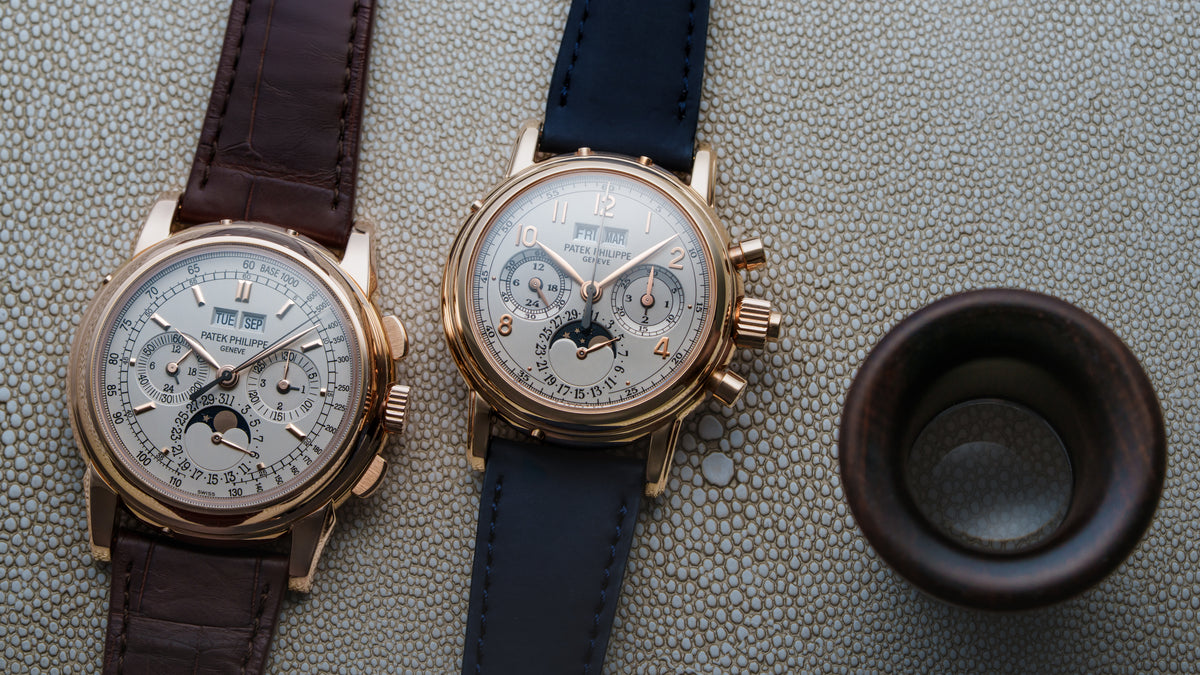
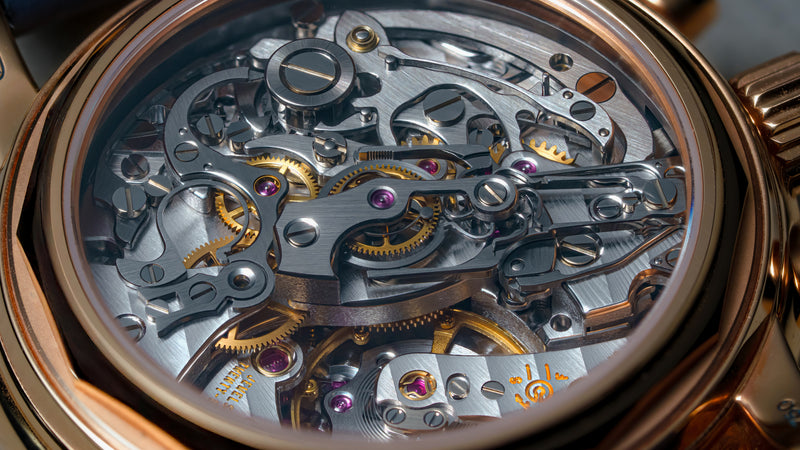


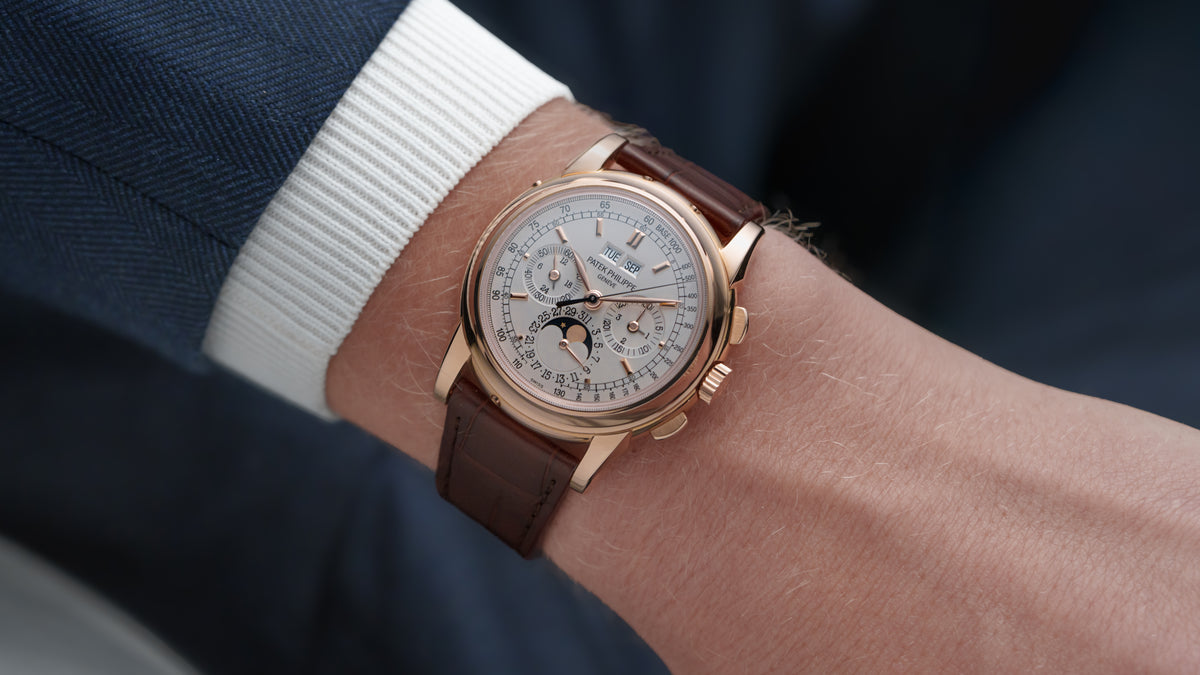
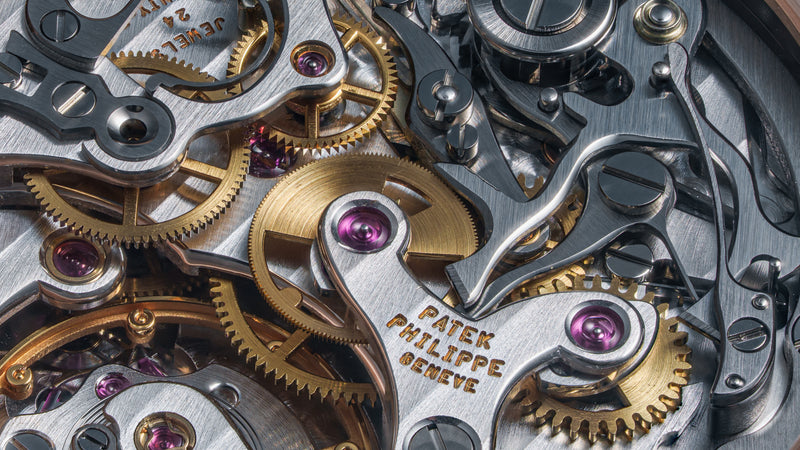









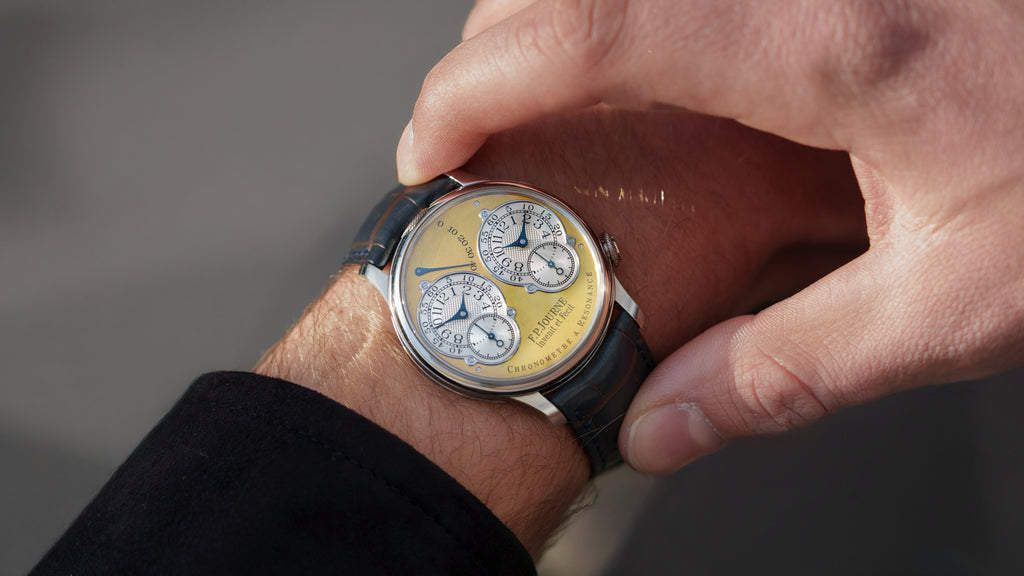
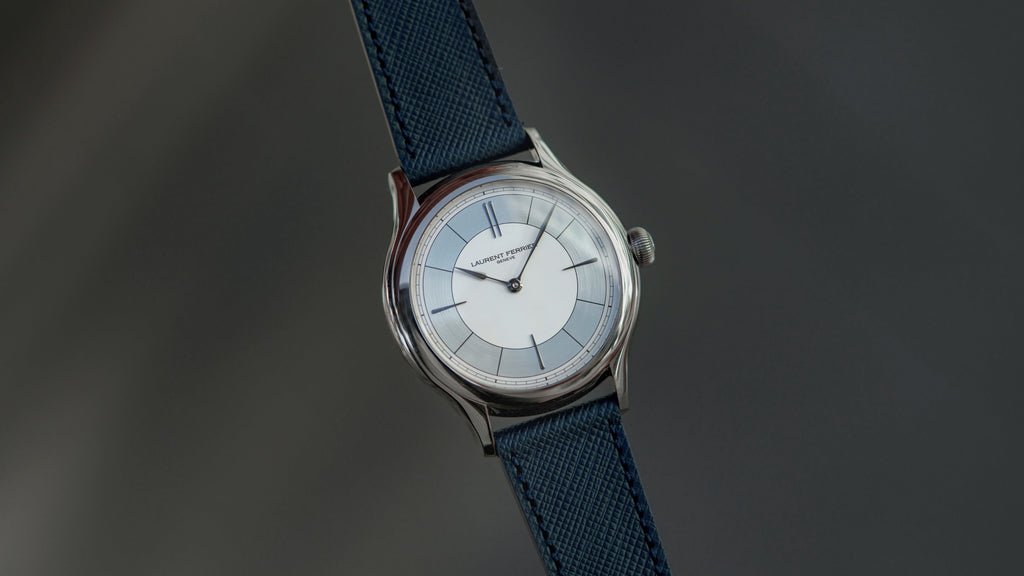


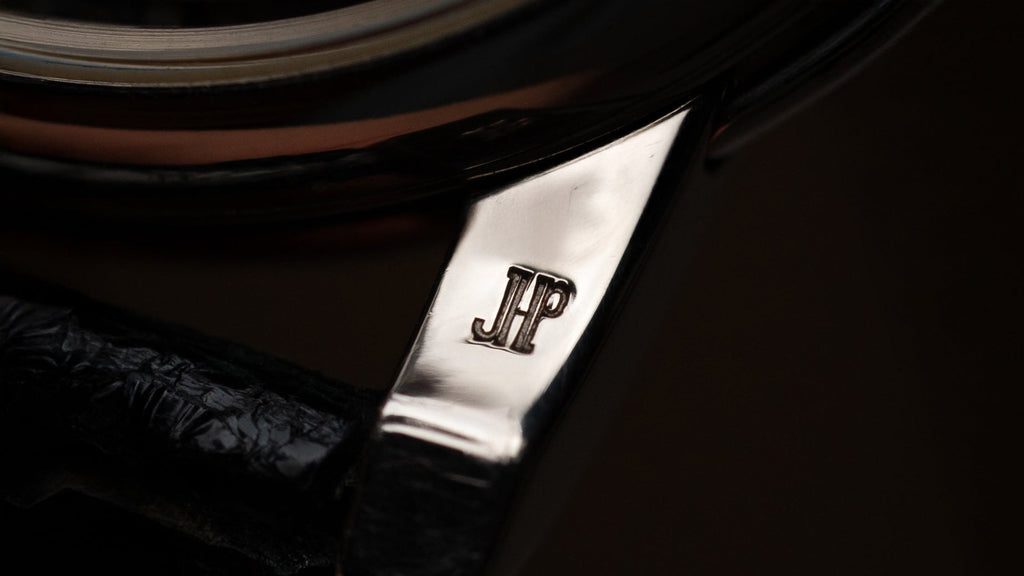
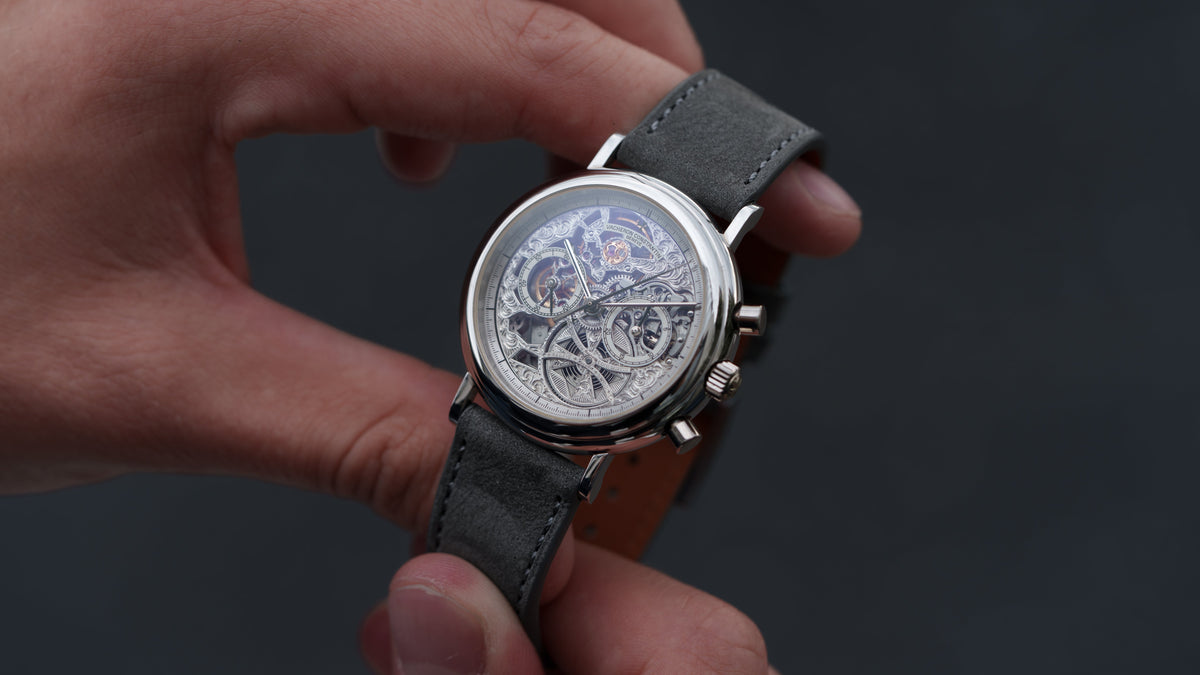
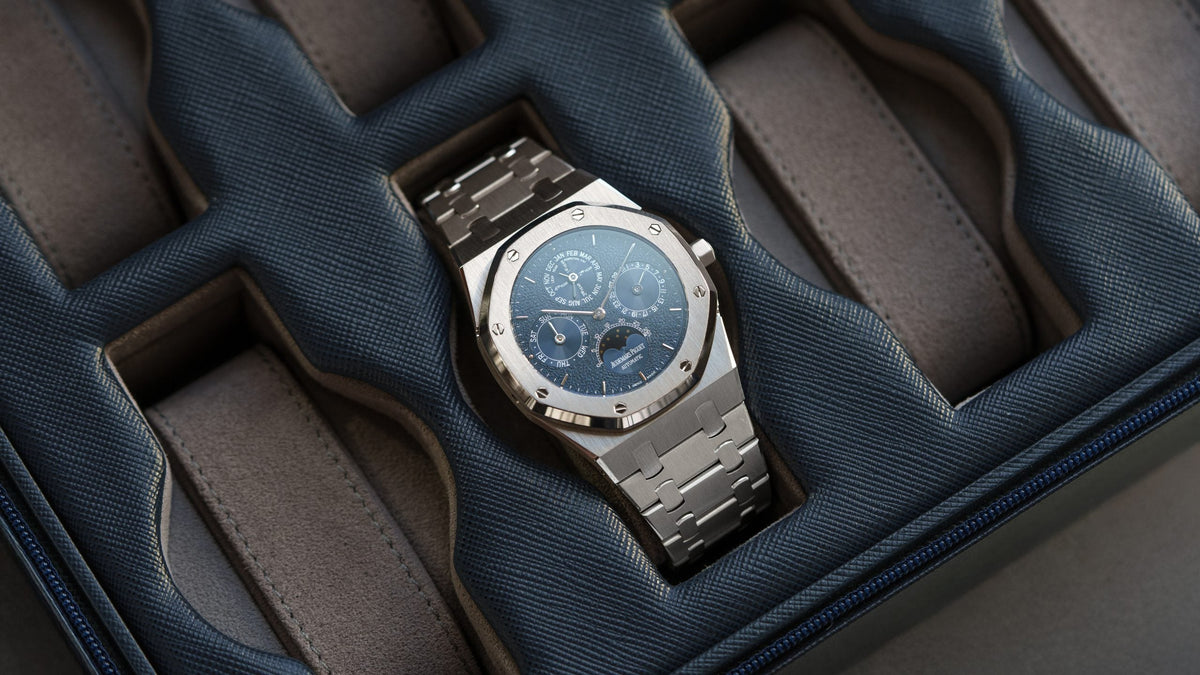


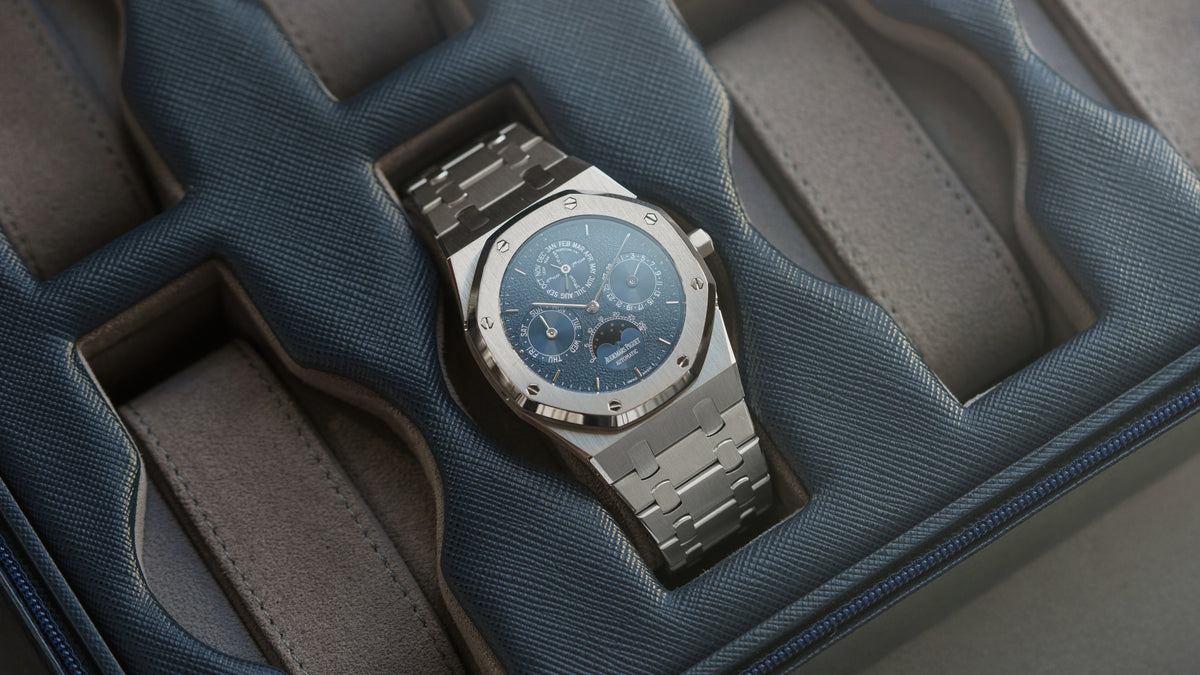
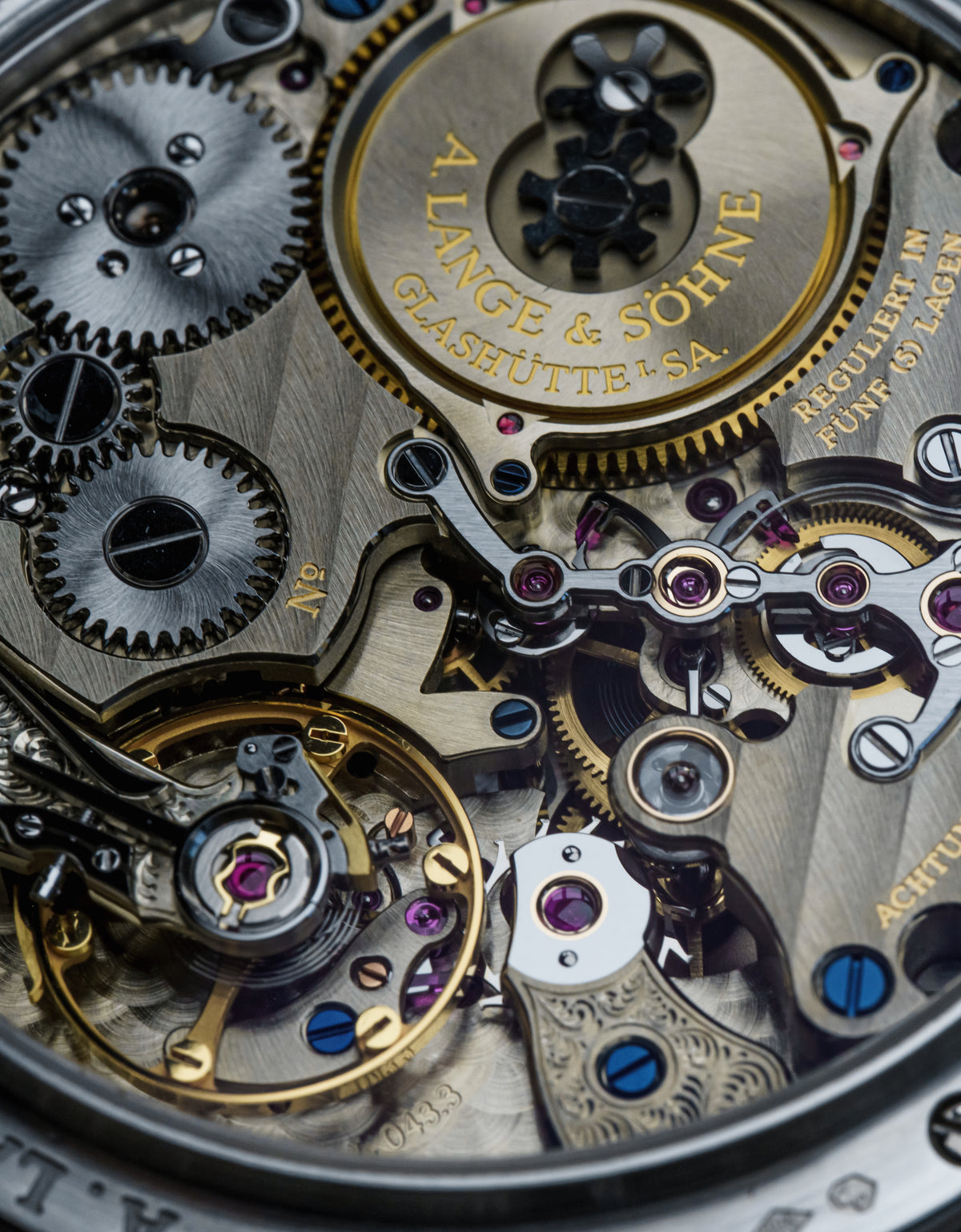

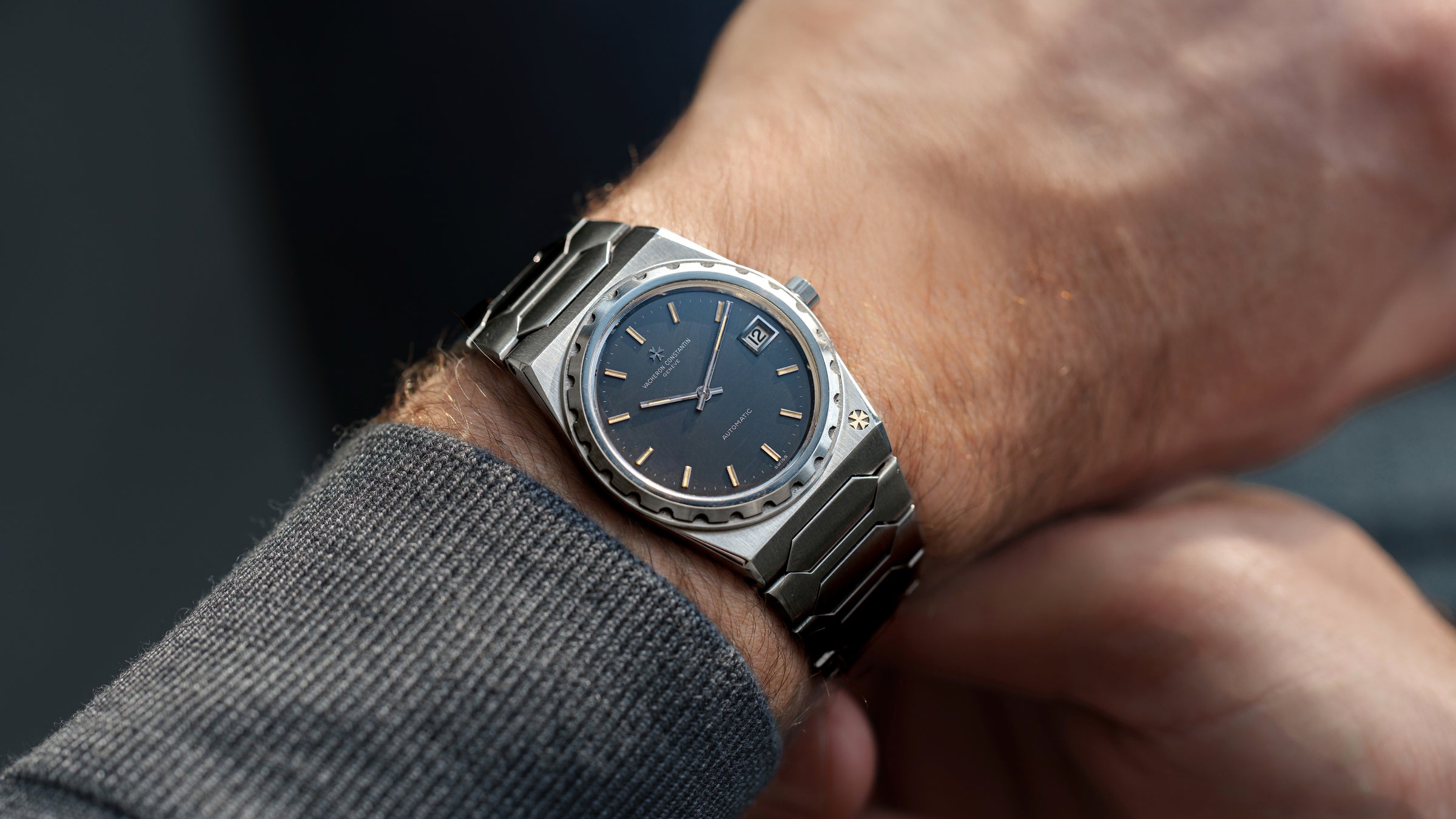


0 comments
Write a Comment